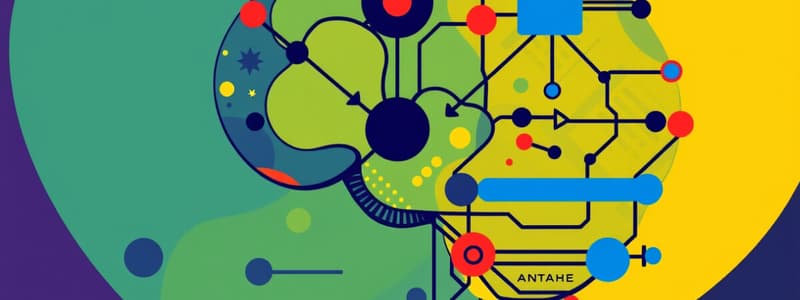Podcast
Questions and Answers
What is the main purpose of an algorithm?
What is the main purpose of an algorithm?
- To provide organized steps for solving a problem (correct)
- To visualize data patterns
- To create complex designs
- To evaluate and generalize solutions
Which of the following best describes the concept of evaluation in algorithmic design?
Which of the following best describes the concept of evaluation in algorithmic design?
- Breaking down a problem into smaller components
- Creating abstract representations of solutions
- Using symbols to make products user-friendly
- Validating if a design or algorithm performs as intended (correct)
Why is generalization important in computational thinking?
Why is generalization important in computational thinking?
- It expands the use of a solution across various scenarios (correct)
- It introduces randomness into algorithms
- It simplifies the problem-solving process
- It focuses on detailed instructions for specific tasks
Which of these steps is NOT part of the algorithm for making pancakes?
Which of these steps is NOT part of the algorithm for making pancakes?
In terms of algorithmic design, which analogy does a recipe best represent?
In terms of algorithmic design, which analogy does a recipe best represent?
What is computational thinking primarily concerned with?
What is computational thinking primarily concerned with?
Which of the following best describes pattern recognition?
Which of the following best describes pattern recognition?
Which technique involves filtering out unnecessary details in computational thinking?
Which technique involves filtering out unnecessary details in computational thinking?
What is the main purpose of decomposition in computational thinking?
What is the main purpose of decomposition in computational thinking?
When applying computational thinking, which task would NOT involve abstraction?
When applying computational thinking, which task would NOT involve abstraction?
What can be considered a shared pattern in cooking?
What can be considered a shared pattern in cooking?
In the context of computational thinking, what is an algorithm?
In the context of computational thinking, what is an algorithm?
Which of the following situations would best apply the concept of computational thinking?
Which of the following situations would best apply the concept of computational thinking?
Flashcards are hidden until you start studying
Study Notes
Computational Thinking Concepts
- Computing: Involves performing calculations or processing data using computer systems.
- Computational Thinking: Analyzing problems to identify potential solutions, useful in complex tasks like product design and event planning.
- Four Key Techniques:
- Pattern recognition
- Abstraction
- Decomposition
- Algorithms
Pattern Recognition
- Definition: Identifying repeated designs or features in data or problems.
- Examples: Shared patterns found in recipes, such as consistent oven temperatures.
- Visual Aid: Patterns can be illustrated by grouping colored blocks or similar repetitive elements.
Abstraction
- Definition: Extracting critical features from a problem to focus on relevant information.
- Process: Filters out unnecessary details to simplify problem examination.
- Example in Baking: Focuses on ingredients and procedure rather than irrelevant details like hand dominance.
Decomposition
- Definition: Breaking down complex problems into smaller, manageable parts.
- Process: Further divides issues until they become easy to understand.
- Example in Baking: Ensuring the oven's temperature is correct is a smaller problem within the context of making biscuits.
Algorithms
- Definition: A structured set of instructions designed to solve problems or complete tasks.
- Examples: Recipes serve as algorithms with specific steps to follow.
- Pancake Making Algorithm: Involves collecting ingredients, mixing, cooking until golden brown, and serving warm.
Additional Approaches
- Evaluation: Validating product designs or algorithms to ensure they effectively address the intended problem.
- Generalization: Adapting solutions to be applicable across various scenarios, such as using symbols on product controls for language-independent usability.
- Consistency Example: The basic structure of a flower remains unchanged while its colors and shapes can vary.
Studying That Suits You
Use AI to generate personalized quizzes and flashcards to suit your learning preferences.




